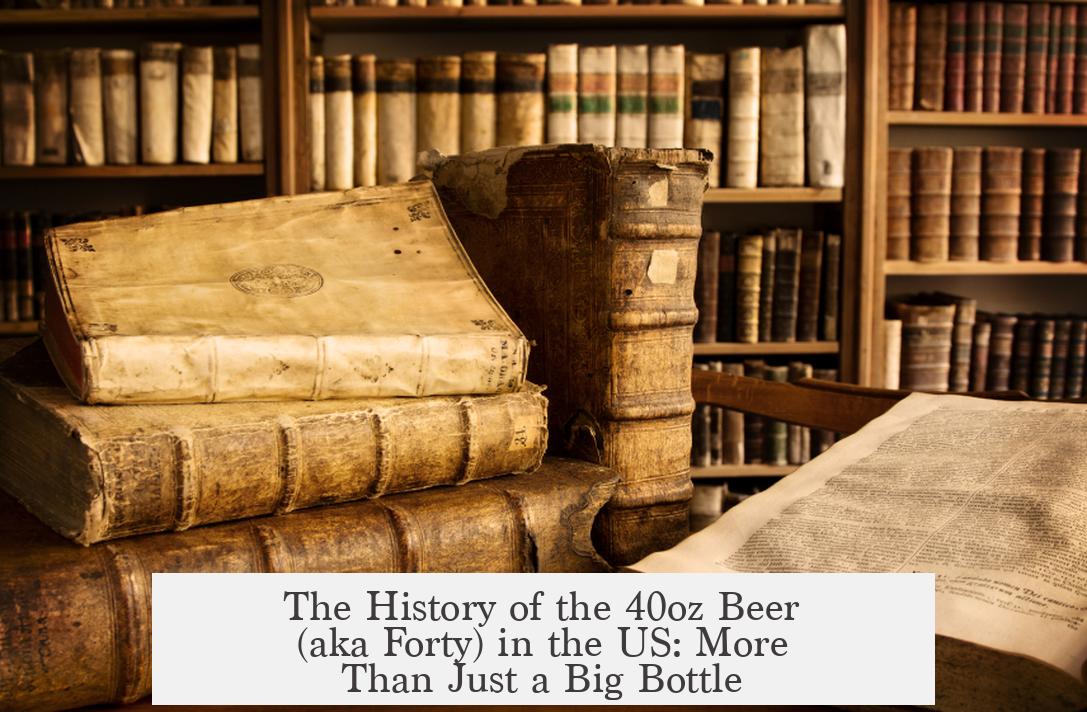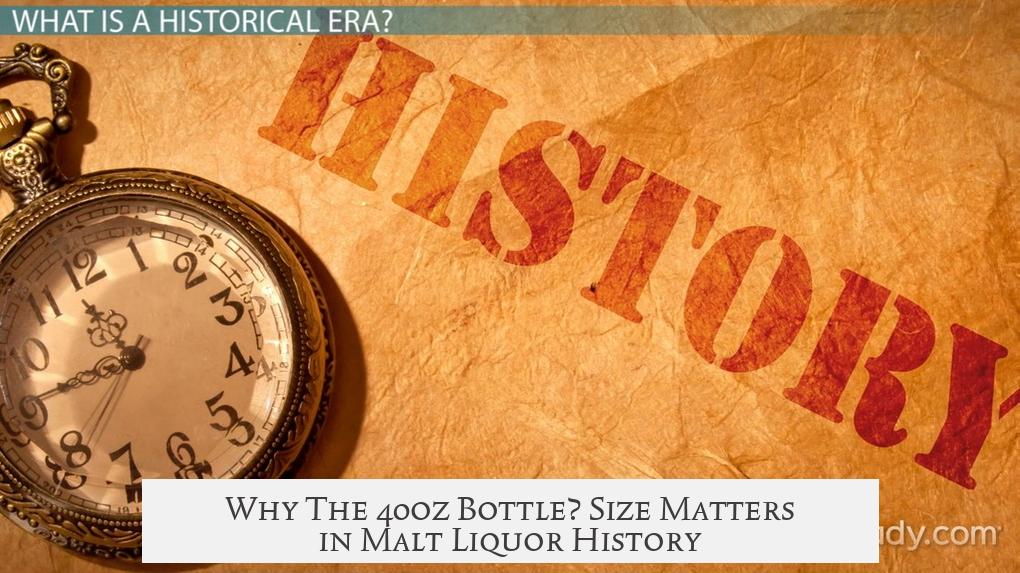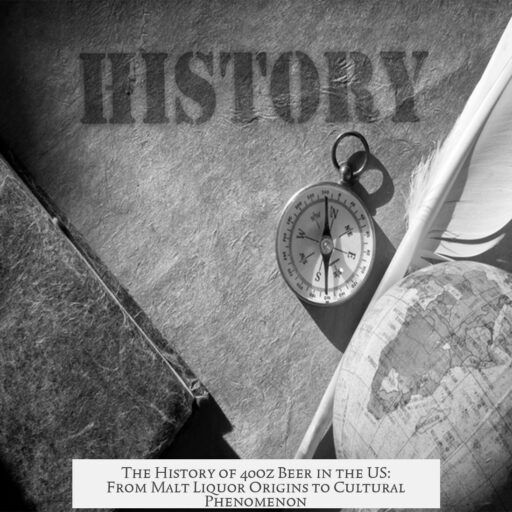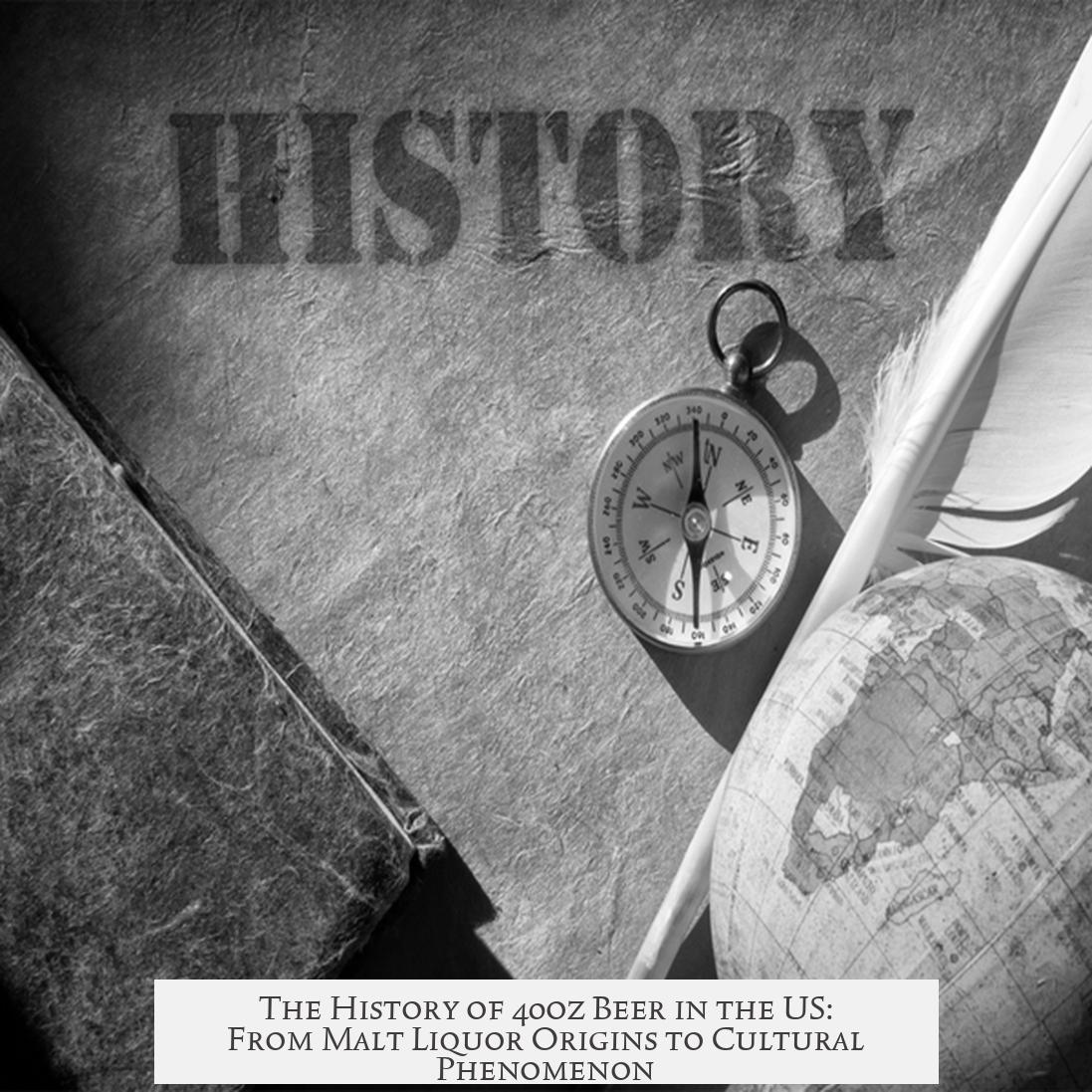The history of the 40oz beer, also known as the “forty,” in the US begins with malt liquor’s creation during the Great Depression as a cost-saving alcoholic beverage. Malt liquor is beer modified to have higher alcohol content by adding enzymes that break down more carbohydrates, enabling yeast to produce more alcohol without extra grain. This process made malt liquor stronger and cheaper, but thinner in flavor.
Malt liquor’s enzyme addition originated in the 1930s as brewers sought to cut costs. Instead of relying on more raw materials, they enhanced fermentation efficiency. This technique echoed the use of Beano-like enzymes to maximize sugar conversion. The resulting drink was drier and more alcoholic but featured less taste complexity than typical beers.
In the following decades, breweries attempted to market malt liquor as a luxurious alternative to champagne. They deployed upscale branding, using names like “Olde English” to imply sophistication. This marketing attempt largely failed with the broader public. However, malt liquor gained wide popularity in African American urban neighborhoods, where sales were unexpectedly strong.
The iconic 40oz bottle format did not appear until the 1980s, long after malt liquor had become established. This larger container size was part of a marketing strategy to circumvent alcohol advertising restrictions that forbade promoting drinks based on their strength. Selling malt liquor in 40-ounce bottles helped position it as a convenient, high-alcohol option for consumers seeking to get intoxicated quickly.
Though academic research on malt liquor remains sparse, some well-documented sources, such as the Thrillist article, provide detailed history and classic advertisements from the mid-20th century. These resources highlight malt liquor’s unique cultural and economic role within the US beverage market.
- Malt liquor is strong beer with added enzymes to boost alcohol content.
- It originated during the Great Depression to reduce brewing costs.
- Early marketing positioned malt liquor as a high-class champagne alternative.
- The 40oz bottle emerged in the 1980s to encourage high alcohol consumption.
- Its popularity grew mainly in urban African American communities.
The History of the 40oz Beer (aka Forty) in the US: More Than Just a Big Bottle

So, what is the history of the 40oz beer (aka forty) in the US? Simply put, the 40oz beer is an iconic large-format malt liquor bottle that emerged in the 1980s, designed to deliver a high alcohol kick at an affordable price. That’s the gist, but there’s a quirky and fascinating backstory bubbling beneath that giant bottle.
Ready for some hops, history, and a dash of intrigue? Let’s pour this story out.
Understanding Malt Liquor: The Base of the Forty
First off, what exactly is malt liquor? Imagine beer, but with a sneaky trick. Brewing yeast normally munches on most of the carbohydrates in wort—the unfermented beer mix—but not all. To squeeze out more alcohol without the price tag of extra grain, brewers started adding enzymes to break down more carbs. Yeast then feasts longer, producing stronger booze.
This enzymatic magic creates a drink that’s drier and packs more punch—usually cheaper and lighter in flavor than regular beer. That’s malt liquor in a nutshell: a higher alcohol, budget-friendly brew made possible by a clever biochemical hack.
The Great Depression: Where Malt Liquor’s Enzyme Trick Was Born
Funny how necessity breeds invention. The enzyme addition in malt liquor wasn’t a modern gimmick but dates back to the Great Depression. Breweries, strapped for cash like the rest of the nation, sought ways to stretch ingredients without sacrificing alcohol content. Adding enzymes to get more out of less grain fit the bill perfectly.
This cost-saving method laid the foundation for malt liquor’s later evolution, including the rise of the 40oz bottle. Poverty sparked innovation that still influences how people enjoy malt liquor today.
Marketing Malt Liquor: From Champagne Dreams to Real-World Scenes
Here’s where it gets unexpectedly interesting. Marketing teams, probably inspired by champagne’s glitz, aimed malt liquor at upscale drinkers. They packaged it with fancy names like “Olde English” to suggest a premium vibe. The campaign wasn’t exactly a sparkling success. Champagne drinkers weren’t lining up for malt liquor as an alternative.
But marketing works in mysterious ways. Breweries noticed robust sales in African American neighborhoods. This accidental discovery helped shape malt liquor’s cultural associations and market presence. It became a go-to option where affordability and higher alcohol content mattered most.
Why The 40oz Bottle? Size Matters in Malt Liquor History

Enter the 1980s, the decade that gave us big hair, big music, and yes, the 40oz bottle. That extra-large format didn’t pop up overnight with malt liquor’s existence but as a crafty response to strict alcohol advertising laws. Breweries couldn’t openly promote high alcohol content. So, they turned to bigger bottles as a subtle yet clear signal: this brew packs a heavier punch.
The 40oz size worked perfectly for consumers aiming to “get really drunk” economically. More bang for the buck, literally. This bottle size became synonymous with malt liquor culture, street scenes, and music references, especially in hip hop during the ’80s and ’90s.
Academic Silence and Popular Curiosity
You might expect a well-studied background for such a cultural staple. However, surprisingly, academic research on malt liquor—and by extension the iconic 40oz—is scarce. It’s one of those niche topics with more folklore and urban cachet than peer-reviewed papers.
Fortunately, some well-researched popular articles have dived into the topic. For example, a Thrillist piece (https://www.thrillist.com/drink/nation/malt-liquor-history-sleazy) offers a thorough exploration of malt liquor’s sleazy yet fascinating advertising history, revealing vintage posters that perfectly capture the brand’s wild marketing days.
So What Does This All Mean for Today’s Forty?
- The 40oz bottle became more than just a container — it’s a cultural icon symbolizing affordability and efficiency in drinking.
- Malt liquor’s enzyme process means you get more alcohol without the higher cost of extra grain, at the expense of flavor and body.
- Its marketing journey from “champagne alternative” to community staple shows how advertising’s unexpected results can shape cultural niches.
In practical terms? If you pick up a forty today, you’re holding a piece of American brewing history—one born of economic hardship, clever science, advertising hustle, and cultural dynamics.
Want to Try and Understand the Forty Culture Better?
Here’s a tip: next time you see a 40oz bottle on a shelf, think about the story behind it. It’s more than a big bottle of beer—it’s a marker of American history, a creative twist in brewing, and, yes, a symbol forged by laws and marketing creativity.
And if you’re someone curious about the finer details of beer brewing science: malt liquor is a great example of enzymatic manipulation changing how beer tastes and performs.
Which raises a cheeky question: Would you rather enjoy a flavorful craft beer or chase the high potency and affordability of a malt liquor forty? Both have their places, but the forty sure tells a unique American story worth sipping on.
“Understanding the history of the 40oz bottle is like cracking open a lager – the flavor lies deep beneath the surface.”
In the end, the 40oz malt liquor bottle stands as a symbol of innovation during hard times, marketing ingenuity, and an emblem of cultural significance. The next time someone throws “forty” around in conversation, you’ll know you’re talking about a brew with a surprisingly rich history.




